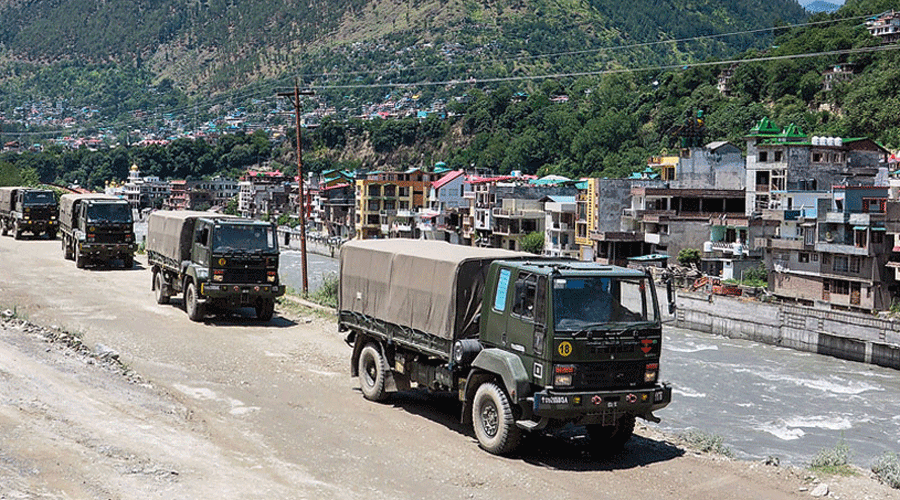The Indian and Chinese armies on Tuesday completed the disengagement process at Gogra-Hot Springs or Patrolling Point 15 where they had been locked in a standoff for more than two years, sources in the security establishment said.
Neither India’s foreign ministry nor its defence ministry has so far issued an official statement on the development.
“After completing the disengagement, both sides are expected to complete physical verification of the area to see whether all temporary structures and other military infrastructure have been dismantled. So far, we do not have the final update on this,” a defence ministry official said.
Under the agreement, both sides have retreated by an equal distance, meaning the Chinese still remain on India-claimed territory while Indian troops have ceded control of more territory, a point emphasised by BJP member Subramanian Swamy.
“Chinese are laughing away on Indian media reports quoting Modi Govt that India and China have vacated to either side of LAC. Truth: China has withdrawn from Indian land and India has withdrawn from Indian land. Thus, China claims: ‘What is mine is mine and what is yours is also mine’,” Swamy tweeted.
The same trend was witnessed during previous disengagements at four other friction points in eastern Ladakh, with alarmed veterans accusing India of ceding further territory to the Chinese.
“The creation of such demilitarised buffer zones or no-patrolling zones at the multiple friction points in Ladakh is no solution at all. Why are we agreeing to the Chinese demand to achieve so-called disengagement?” a former lieutenant general told The Telegraph.
The former lieutenant general said: “Why is India accepting their terms and retreating from its positions to create buffer zones within Indian territory as part of the disengagement process?”
These buffer zones, he said, pose a threat as the Chinese army can occupy the positions vacated by Indian troops anytime.
On September 9, India’s foreign ministry had said the disengagement process in Gogra-Hot Springs had begun on September 8 and would be completed by September 12.
“It has been agreed that all temporary structures and other allied infrastructure created in the area by both sides will be dismantled and mutually verified. The landforms in the area will be restored to pre-standoff period by both sides,” a ministry statement had said.
The two sides had previously completed “partial” disengagement from four other areas — the Galwan Valley, the north and south banks of the Pangong Lake, and Gogra (Patrolling Point 17A) — by creating similar buffer zones.
The Chinese are yet to disengage from the strategic Depsang Plains where they are said to be entrenched 18km inside India-claimed lines.












